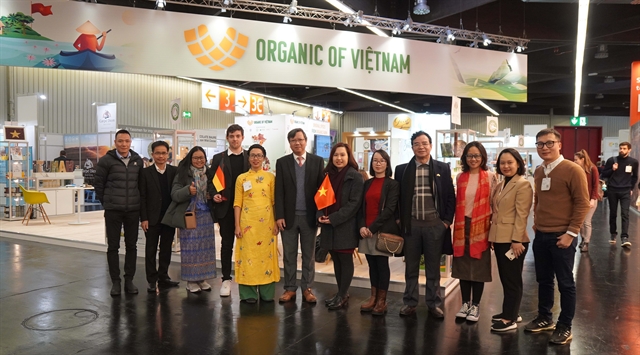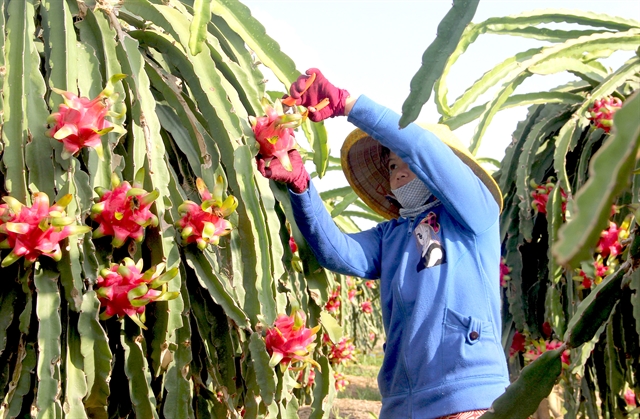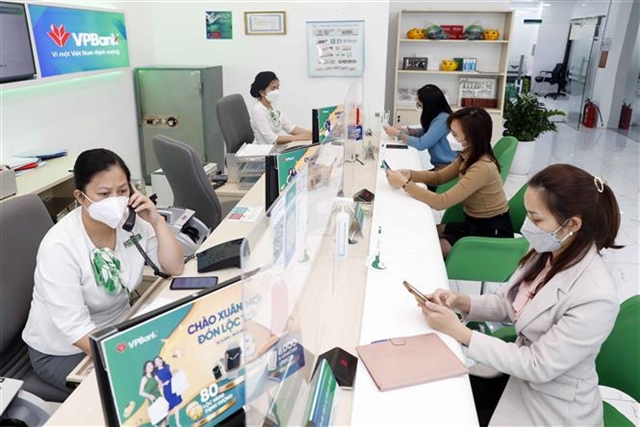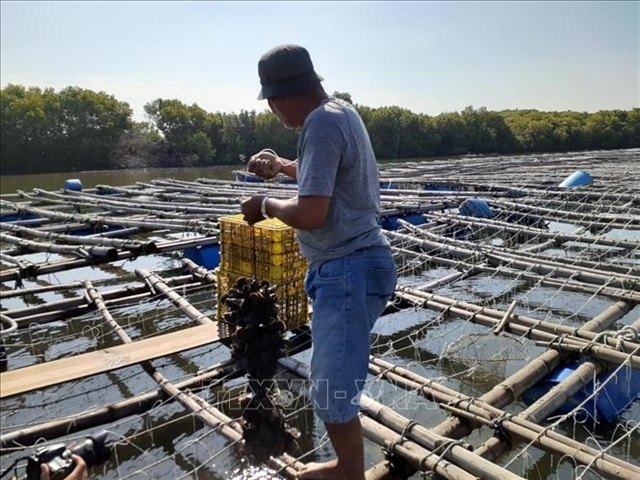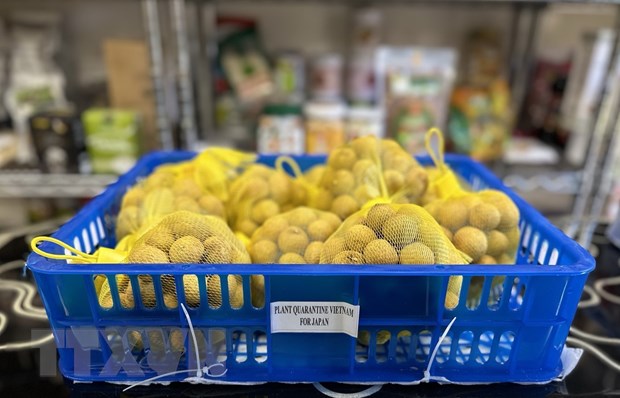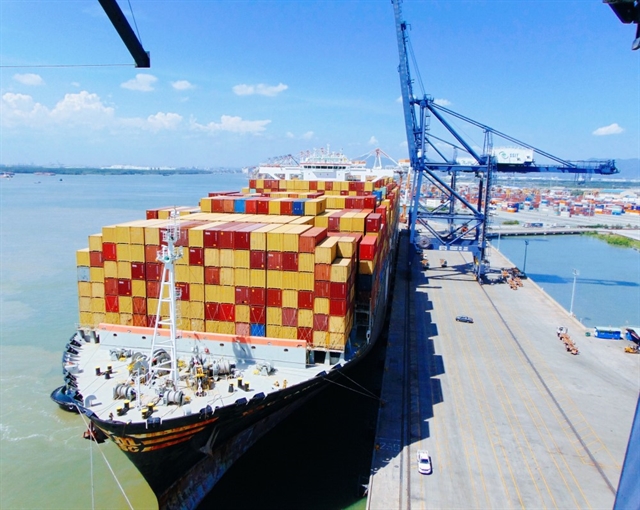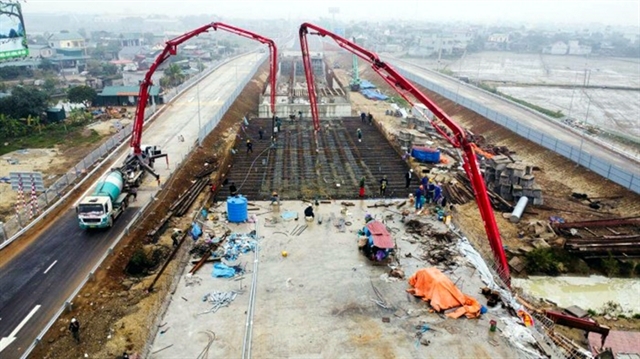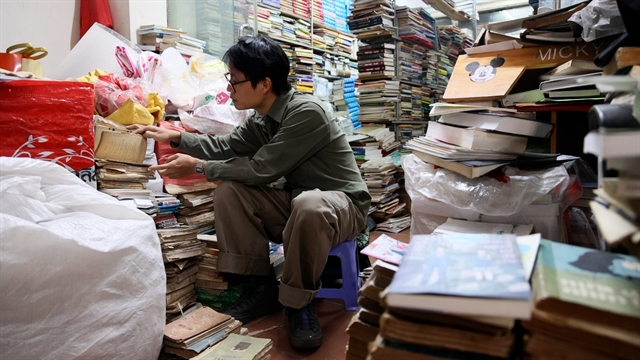
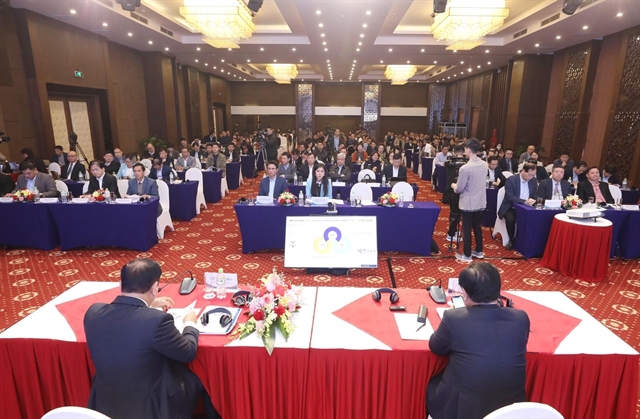 |
| Participants at the conference held in the northern border province of Lạng Sơn on Tuesday. — VNA/VNS Photo Anh Tuấn |
LẠNG SƠN — Việt Nam and China have agreed to accelerate the trade of high-quality agricultural and food products between the two countries as part of their efforts to promote and deepen the bilateral comprehensive strategic cooperative partnership.
Vietnamese Minister of Agriculture and Rural Development Lê Minh Hoan delivered this statement during a conference held in the northern border province of Lạng Sơn on Tuesday.
For its part, Hoan said, his ministry has worked closely with the Chinese side to ensure smooth bilateral trade of agro-aquatic products.
He hoped that authorised agencies of Guangxi (China) and border localities of Việt Nam would enhance their coordination to promote the trade of agricultural and food products from the two countries.
The two sides should also team up to promptly handle difficulties, especially those arising in the process of implementing and meeting current regulations on exporting agricultural products and food, Hoan said.
At the same time, he called for enterprises and trade associations to give their advice and proposals to help the ministry develop plans to facilitate border trade with China.
Tô Ngọc Sơn, deputy director of the Asia-Africa Market Department under the Ministry of Industry and Trade, said two-way trade between Guangxi and Việt Nam last year reached US$29.2 billion, accounting for 95 per cent of total border trade between the two countries.
He suggested that Vietnamese localities step up cooperation with the Chinese locality in operating border gates while increasing the provision of information about customs clearance, seeking measures to strengthen mutual support, and paying greater attention to the domestic market.
Vietnamese enterprises needed to regularly update and comply with regulations on quality standards, testing, quarantine, packaging, and traceability of the Chinese market. They should also focus on building and protecting their brands and surveying the needs and trends of the market, Sơn suggested.
Also, enterprises needed to build a team of staff who are fluent in Chinese and know about the market while taking advantage of the Việt Nam-China rail transport route to promote their exports.
Lu Xian, a representative from the General Administration of Customs of China, said that the administration would continue to work closely with their Vietnamese partners to review the dossiers of goods to be exported to the Chinese market, with a focus on examining the processing and cleansing procedures and certificates of origin to remove obstacles in importing and exporting farm produce and food.
He advised Vietnamese firms to clearly understand the process and regulations and food examining and monitoring methods to ensure fast and smooth customs clearance activities.
Meanwhile, Wang Jianbo, chairman of the Guangxi Business Association, said Việt Nam had a lot of potential agricultural and aquatic products to export to China, such as coffee, cashew nuts and seafood, thanks to the market's great demand for these items.
Thus, Vietnamese firms should boost e-commerce activities for the trading of farm produce with Chinese partners, and focus on processing frozen agricultural and aquatic products for export, he said, suggesting border localities strengthen infrastructure connectivity.
During the event, the chairman of Lạng Sơn People's Committee Hồ Tiến Thiệu said his province would continue to drastically implement solutions to promote import, export and border trade activities between the two countries.
Việt Nam has been China's largest trade partner among ASEAN countries. Meanwhile, China is the largest trade partner and the biggest export market of Việt Nam.
According to the General Department of Customs, China was Việt Nam’s only trading partner to have an import and export turnover reaching more than $10 billion in January.
Of the figure, Vietnamese export turnover hit $3.87 billion while the country spent $7.23 billion on importing goods from the northern neighbour.
Việt Nam’s key export commodities include phones and components, while major imported items are electronics and components, machinery, equipment, tools and spare parts, materials, consumer goods, and agricultural products.
Currently, China is an important export market for some Vietnamese agricultural products. It is the country’s third largest importer of seafood products, behind only the US and Japan.
The General Administration of Customs of China has granted 435 codes to Vietnamese agricultural product exporters this year.
In 2022, import-export revenue of agro-forestry-aquatic products between the two countries reached $14.2 billion, up 12.7 per cent year-on-year, including $10.4 billion worth of Vietnamese exports. — VNS




